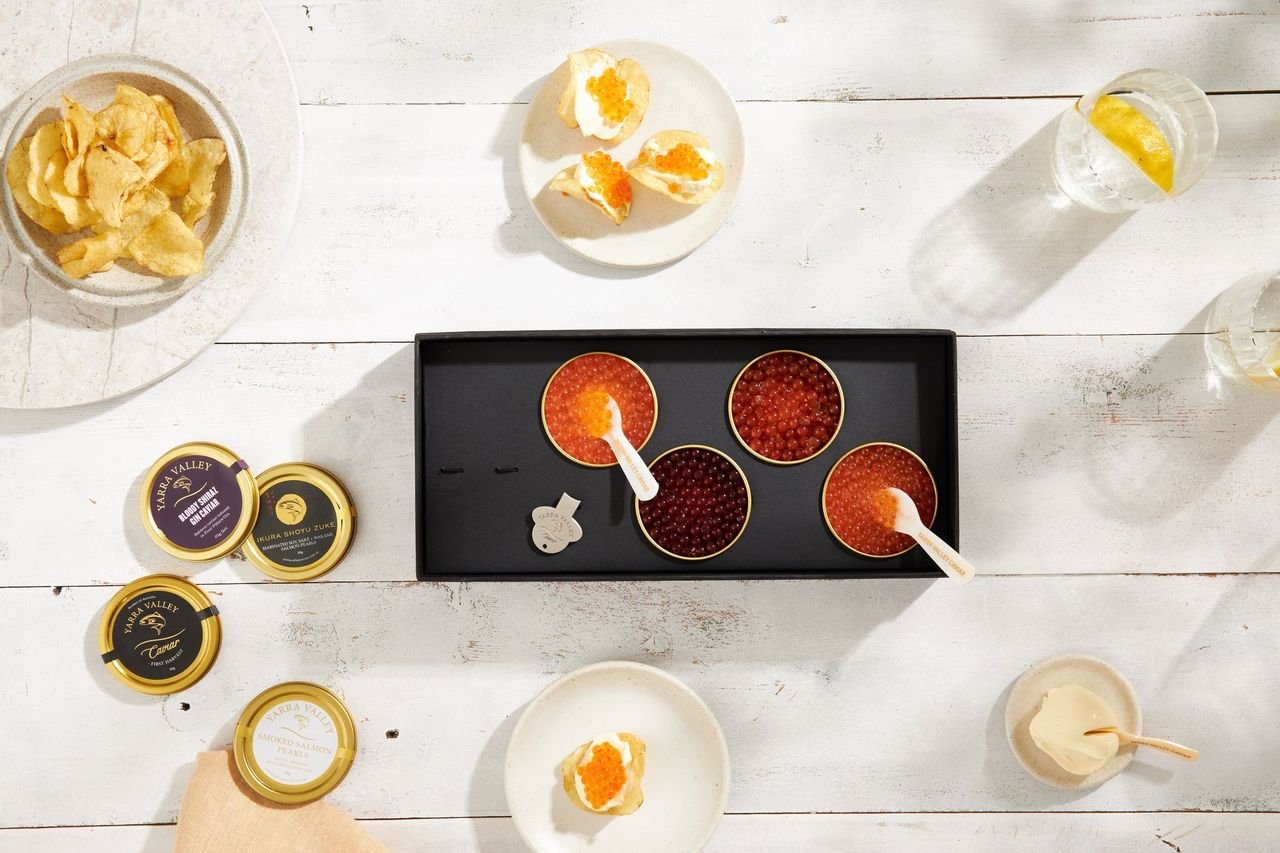If there’s one food that’s synonymous with pure opulence, it’s caviar. As rare as it is expensive, caviar is coveted all over the world for its flavour and luxe texture. With its costly price tag, it is little wonder how it received its nickname, “black gold.”
But what is it, exactly? Put simply, caviar is unfertilised fish eggs (also known as roe), that is harvested exclusively from the sturgeon family of fish. Best served cold, it is a salty delicacy that has been enjoyed for centuries.
Where does caviar come from?
The first known record of consuming caviar dates back to Greek scholar Aristotle in the 4th century BC but it was originally harvested by Russian and Persian fishermen in the Caspian Sea.
Premium quality caviar comes from the Caspian Sea, which is home to the Beluga, Osetra and Sevruga sturgeon. While Russia and Iran have led the way in dominating the caviar market, China has recently become a large exporter of caviar.
Types of Caviar
There are 27 species of sturgeon, and almost all of them can be harvested for their eggs. However, the most common types of caviar are listed below:
- Beluga Caviar: Native to the Caspian Sea, beluga caviar is rich, with no fishy taste. It ranges in colour from pearl grey to extremely dark. It is prized for its soft, pea-sized eggs.
- Golden Caviar: As its name suggests, golden caviar is a light, yellowish colour. It was once reserved for Russian, Iranian and Austrian royalty, and has a creamy, soft and sumptuous flavour.
- Kaluga Caviar: Closely matching the taste of beluga caviar, kaluga eggs are smooth and have an earthy, buttery flavour that is lightly salted.
- Osetra Caviar: Slightly smaller than beluga caviar, osetra caviar is identifiable by its dark brown roe with black streaks. It has an earthy, nutty and fruity flavour, which some describe as a combination of raspberries and walnuts.
- Sevruga Caviar: With small eggs that are grey in colour, sevruga caviar is known as the “flavour of the sea.” It has a strong and intense buttery flavour.
Why is caviar considered a delicacy?
Manually harvesting caviar and getting it to the consumer is a time-intensive and laborious process. The demand for caviar is always greater than the supply, which adds to its rarity. This is due to the female sturgeon reaching maturity and producing eggs after 7-20 years. Furthermore, trade in wild-produced caviar is also heavily regulated. Add to the fact that caviar has a short shelf life, and you’ve got a highly desirable, sophisticated and peculiarly distinctive food item.
If you’re seeking high quality caviar that is harvested from an export-approved boutique freshwater aquaculture farm, choose Yarra Valley Caviar.
